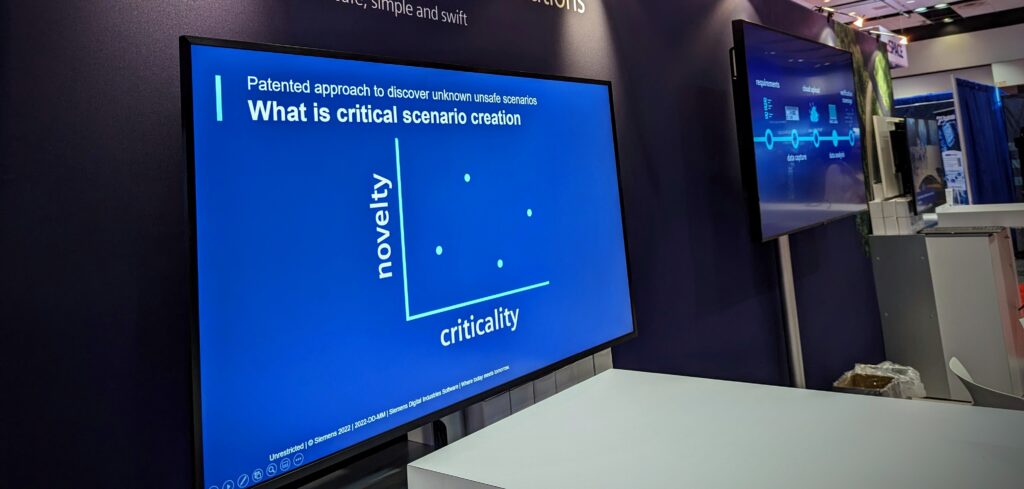Siemens Industry Software is at this year’s ADAS & Autonomous Vehicle Technology Expo California to highlight its Simcenter autonomy solutions, which it says allow customers to bring autonomy to the road safely, simply and swiftly.
Akshay Sheorey, global business development lead for autonomy solutions at Siemens Digital Industries Software, explained, “Sophisticated advanced driver assistance systems (ADAS) and autonomous driving systems (ADS) are in a continuous struggle to balance the complexity and cost of testing against validation and verification efforts. Delivering trustworthy ADAS features and AVs means being certain that a system can perform safely in the widest range of real-world scenarios. The large volume of data generated from ever-increasing sensor configuration data needs to be analyzed according to applicable regulations and standards as well as internal requirements.
“The main challenge for ADAS system development to meet the SOTIF standard is to have a robust and scalable way to automatically generate unknown-unsafe scenarios,” emphasized Sheorey. “The more scenarios that can be evaluated, the less the impact of the unknown-unsafe scenarios on system safety.
“Quantifying what constitutes criticality in the scenario is another key challenge. Siemens has developed a proprietary methodology to systematically generate unsafe-unknown scenarios for a specific ODD and (optionally) recorded data. By adopting the critical scenario creation process, OEMs and AV suppliers have a methodology to automatically generate unknown-unsafe scenarios. The scenario-based testing methodology for ADAS and ADS means that relevant scenarios need to be identified and further evaluated with accurate and trustworthy digital twins.
Speaking about the show, Sheorey enthused, “ADAS & Autonomous Vehicle Technology Expo provides a fantastic platform for the autonomous vehicle community to exchange ideas and discuss the challenges being faced. It is a forum to look at how various companies are addressing these challenges and coming up with innovative solutions.
“To achieve large-scale adoption of driver assistance systems in vehicles means that developers of such systems need a requirements-driven, traceable verification solution that is shared across the organization, to enable a structured, non-disputable safety argument.”
Discover more at Booth 711.


